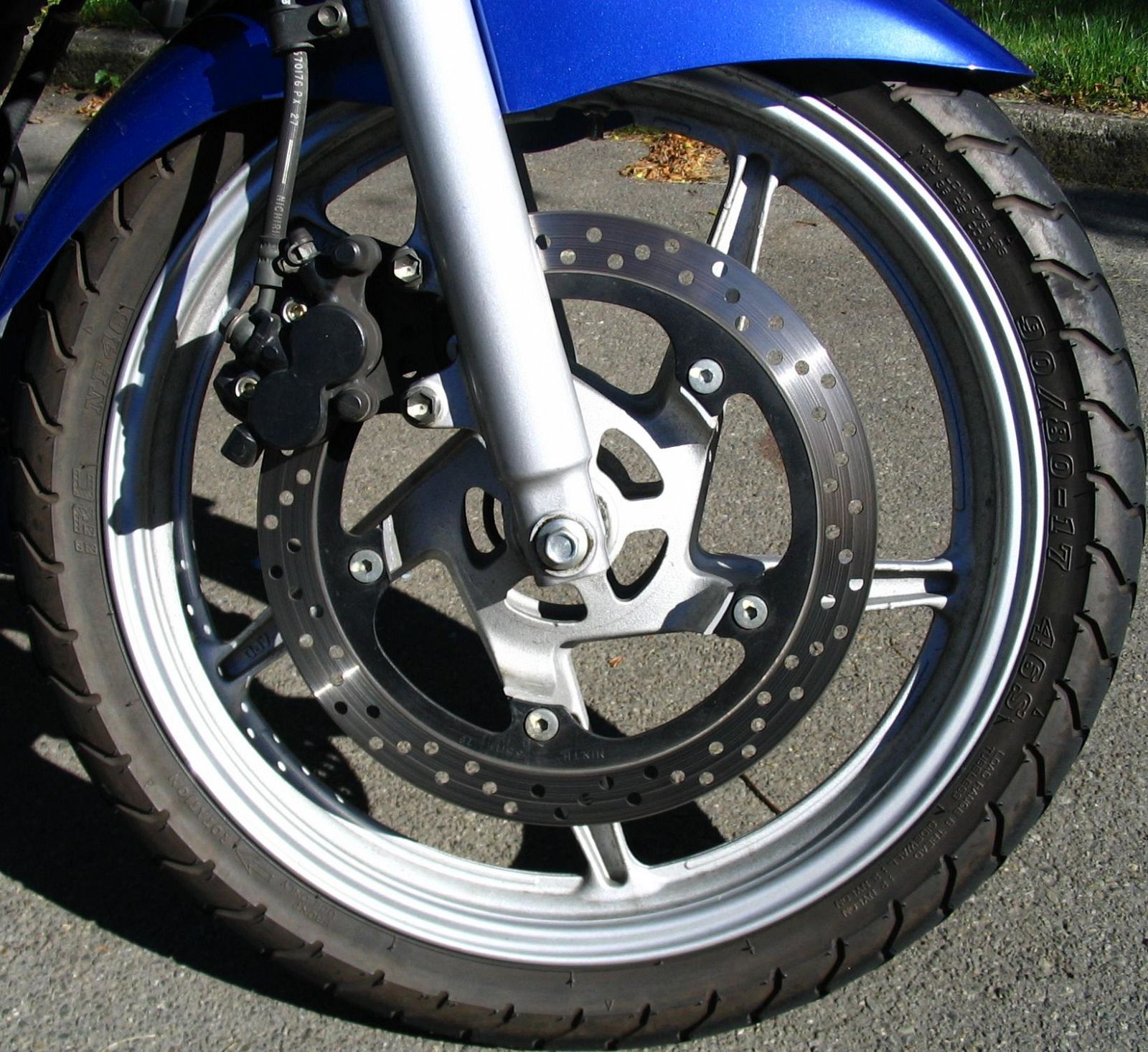The efficiency of your brakes is misunderstood by almost everybody. You have heard, I'm sure, that the front brake provides about 70% of your stopping ability while the rear brake provides about 30%.
NUTS!
If you simply use the rear brake, and you stomp on the pedal to do so, you will get about 33% (or less) of the total stopping potential of your brakes. That, because you will immediately cause a weight transfer that unloads the rear and, thus, reduces traction which causes a skid and which further reduces your stopping efficiency.
If you don't stomp on the rear brake but, rather, apply it aggressively up to the point of a skid the stopping power of your rear brake rises to about 40% of your total potential braking power.
That does NOT mean that your front brake, therefor, can provide from 60% to 67% of the total braking power of your bike!!!
If you use the front brake by itself (and do not let it lock the front wheel) that brake can provide up to 100% of the total potential braking power of the bike as witness the fact that you can cause the rear wheel to leave the ground.
If you use both brakes at the same time then for the earliest part of the effort the rear brake is providing perhaps 20% of the total stopping power and fades to zero (or close to it) with weight transfer as you increase the use of the front brake.
If you are keeping track, the total braking power applied to slowing you down or stopping you is NEVER GREATER THAN 40% from the rear brake and NEVER LESS THAN 80% from the front brake. Clearly this is not a zero-sum game.
How can that be? Because weight transfer is always greater when you use the front brake and that robs traction from the rear tire and, thus, renders the rear brake less and less effective.
Riders who rely only on their rear brakes ALWAYS leave more than half their stopping power on the table.
Braking is NOT a Zero-sum Game!
Date :November 26, 2014










24
Comment